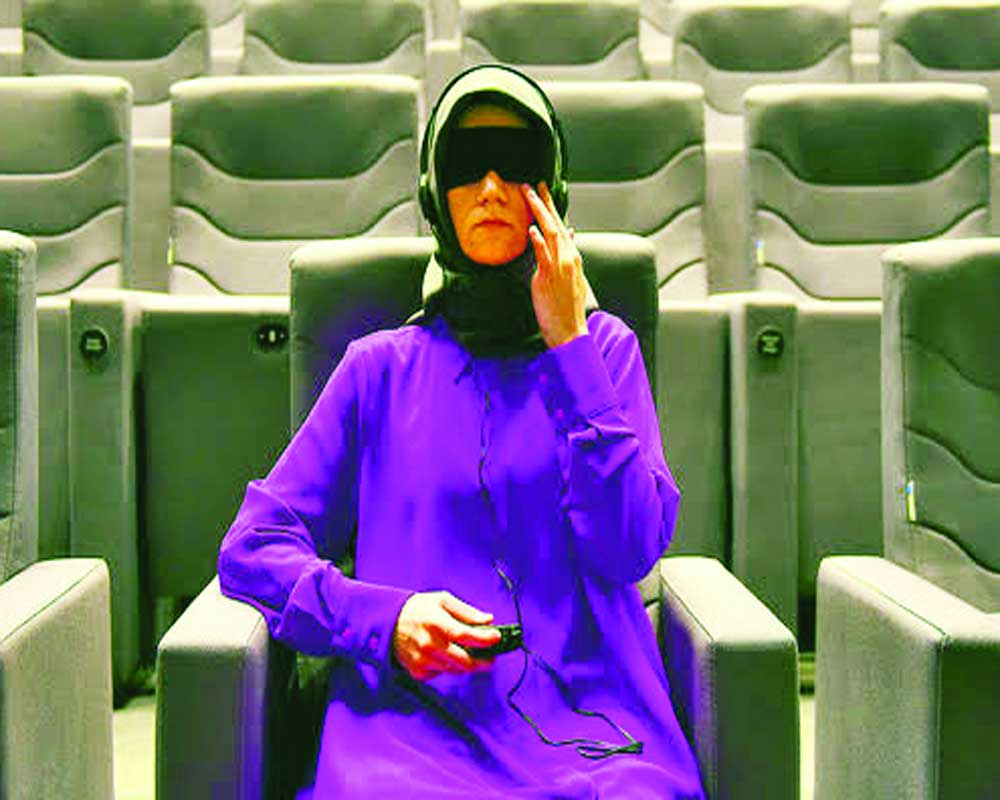The directive of I&B Ministry to use audio descriptions in cinemas is a step towards inclusive entertainment for the visually impaired, says Sakshi Sharma
The next time you visit a cinema hall, close your eyes for a few minutes and try to understand the film that’s playing on the big screen. You may understand the dialogue-heavy sections but when it is emotions that predominate without a verbal exchange, it will make you feel disconnected with the story all of a sudden. This is what visually impaired people experience when they ‘watch’ a film along with sighted audience.
Despite cinema holding an undeniable charm and being a popular part of our culture, a large chunk of the society, especially the visually impaired, is deprived of this enriching experience. This makes them feel excluded from the rest of the society. The founder secretary of Koshish School in Karkardooma, (a school for specially-abled children), Mridul Singh says that the visually impaired people are aware about the forthcoming films. She adds, “They are excited about the film and its actors but are not able to understand the plot as the films are not friendly to them.”
To overcome this issue and make cinema inclusive, the Information and Broadcasting Ministry has issued a new directive to the Central Bureau of Film Certification (CBFC) to use audio description in cinemas. This is a facility provided for visually impaired people in which a film, a television programme or a play is described through audio technology.
Though the government has taken such a step at a broader level now but various efforts have already been made in this direction in the past. Last year, Saksham theatre had launched the XL Cinema app, which has audio descriptive tracks for 28 films so far. The first one being Sanju. It has paved a way for persons with visual disabilities to experience films. What’s it like to be in a theatre when you can’t see? “Before the advent of audio descriptions, visually impaired people could only hear the dialogues. During the non-dialogue sequences, they wouldn’t understand the scenes. People with normal sight can react to emotions and scenes that they can watch but those with visual disabilities cannot. It is very difficult for them to comprehend,” said Rummi K Seth, founder and managing trustee of Saksham, during the launch.
In April 2018, PVR Limited too introduced its The Accessible Cinema Programme #Cinema4All, which aimed at making films accessible to all.
But the idea of inclusivity harks back further in the past. Theatre director Prateek Kumar says, “We can draw inspiration from the Ancient Indian Theatre where the sutradhar (narrator) described the scenes. He conveyed the story to the audience by describing actions, facial expressions, mental state of characters and other elements like costume, properties and set; present in the story.” He kept the storyline interesting by providing proper descriptions. Prateek feels that this direction of the Ministry will help visually impaired audience to stay updated and be aware about the contemporary world, even at par with the audience with vision.
Though Bengali filmmaker Ranjan Ghosh finds it to be a good initiative, which focusses on humanism but he points out, “There are certain elements and emotions which cannot be portrayed through words. It can only be visually experienced.” So we should ensure that the creativity and essence does not get compromised or dilluted in any way. He adds that before taking a step in this direction, we need to make sure that the visually impaired are interested in watching films. Ghosh says that there should be a culture for them to come and watch films. “I have never seen any of them coming to watch films. The central and state government should motivate them to come out and do that,” he adds. If they are responding positively to this, then we need to take it forward so that there could be a whole new audience.
Contrary to Ghosh, Prateek says that the audio descriptions can be added without compromising on the art of storytelling or reducing the interest level of cinematic or theatrical piece. However, it depends largely on the storyteller as well.
Aditya Om, an independent filmmaker says that 20 to 30 years ago some classics were made accessible to all. One wonders the reason for the discontinuation of this process. As an independent filmmaker he says that it might cause a hole in his pockets but it is not a big deal if it is backed by a social purpose. He says, “Audio is a very integral part of our films. To decipher the films through audio in a way that it is understood by the people is a different kind of art form.” The filmmaker is currently working on his forthcoming Mella, a film on manual scavenging.
It is time that we step into the shoes of the visually impaired and proceed towards an inclusive tomorrow.
























